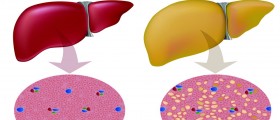
Metabolic Acidosis - Introduction
Metabolic acidosis is a condition which features with production of too much acid or insufficient elimination of acid by kidneys. If left untreated metabolic acidosis causes so called acidemia. The main characteristic of acidemia is low pH, typically less than 7.35. Acidemia occurs due to increased production of hydrogen or insufficient production of bicarbonate in the kidneys. Metabolic acidosis is rather serious condition and it requires prompt medical treatment. It may cause serious complications and in neglected cases patients may even end up in a coma or die. Metabolic acidosis never occurs spontaneously and it is a consequence of some underlying medical condition which must be identified and treated as well.
Causes of Metabolic Acidosis
There are many causes of metabolic acidosis. All of them may be classified into several groups basically according to the pathphysiological origin.
The first group consists of conditions which lead to increased acid load. They include any medical condition which leads to lactic acidosis (heart failure, different drugs, toxins etc.), ketoacidosis caused by diabetes, starvation or excessive consumption of alcohol and poisoning with specific substances which make acid or prevent proper excretion of acid (methanol, salycilate, ethylene glycol, paraldehide, iron, and sulfur etc).
The second group includes conditions which lead to excessive loss of gastrointestinal bicarbonates. They are diarrhea, fistulae of pancreas, biliary tree or intestine, urinary-gastrointestinal diversion surgery and cholestyramine.
And finally, metabolic acidosis occurs if excretion of dietary acid load is impaired. This is a characteristic of renal failure, hypoaldosteronism in type 4 renal tubar acidosis, impaired secretion of H+ in type 1 renal tubar acidosis, excessive loss of renal bicarbonate, type 2 renal tubar acidosis and it may also occur as a side effect of Acetazolamide.
Symptoms and Signs of Metabolic Acidosis
Symptoms of metabolic acidosis are not specific and this makes setting of the diagnosis rather difficult. It is easy to diagnose the condition only if patient undergoes blood gas sampling with particular purpose.
Still, the symptoms of metabolic acidosis may include chest pain, palpitations, headache, changes in mental status (severe anxiety etc), nausea, and vomiting, abdominal pain, loss of appetite, muscle weakness and pain in bones. In severe cases patients develop deep rapid breathing which is characteristic of the condition medically known as Kussmaul respirations. In extreme cases one may develop neurological complications such as stupor, seizures and coma. Acidosis may also induce arrhythmia and decrease response to epinephrine.
Treatment for Metabolic Acidosis
In case the level of pH is below 7.1 this is considered as medical emergency. It carries significant risk of cardiac arrhythmias. This requires treatment with intravenous bicarbonate. Administration of bicarbonate is accompanied with rigorous monitoring of the arterial blood gas readings. Unfortunately, this treatment is not effective in case of lactic acidosis. In severe form of metabolic acidosis and potential intoxication dialysis may treat both, the intoxication and acidosis. And finally, the underlying condition must be identified and treated as well.















-Symptoms,-Diagnosis,-Treatment_f_280x120.jpg)

Your thoughts on this
Loading...